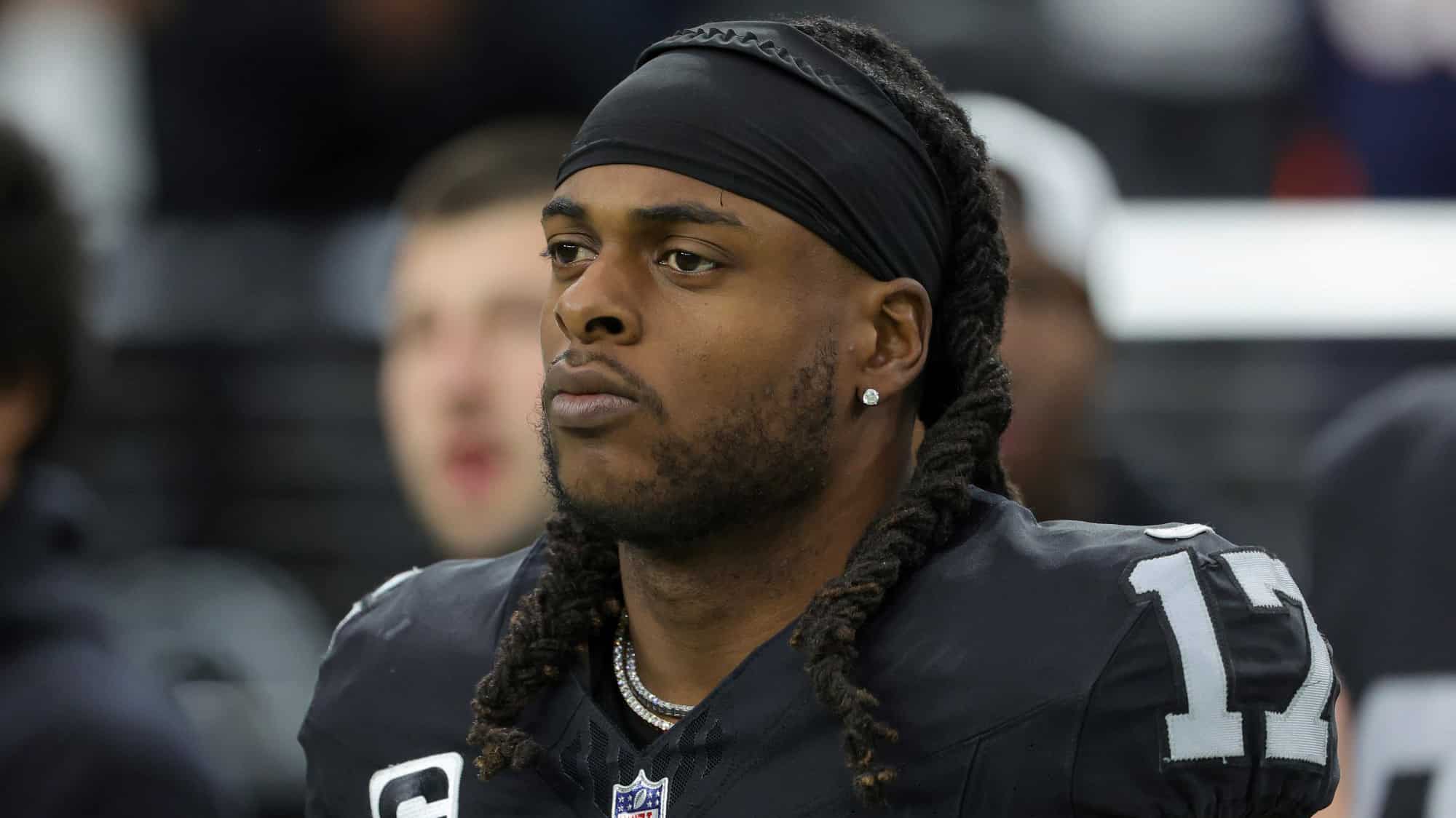The New York Jets will likely explore the trade market this offseason
Let the Davante Adams to the New York Jets smoke officially begin.
The Jets need another receiver opposite Garrett Wilson, and Aaron Rodgers’ favorite target may just be available. He has quite a hefty contract in Las Vegas, though.
Let’s try to understand: can the Jets acquire Adams? What would the cap ramifications be?
Trades
When a player is traded, here is the rule of thumb.
- All the signing bonus/prorated bonus/restructure bonus money applies to the trading team‘s cap for the upcoming season.
- The acquiring team takes on the base salary, roster bonuses, and workout bonuses.
- Cap savings are listed as what the player’s cap hit would have been minus the amount of dead cap.
Let’s use Davante Adams’ contract as an example.

Adams has a prorated bonus of $7,850,000 million each from 2024-26. That means that if the Raiders trade him before June 1, 2024 (more on that later), $7,850,000 × 3 = $23,550,000 will be dead cap on the Raiders’ 2024 salary cap — which is exactly what Over the Cap lists.
Meanwhile, because Adams’ cap hit would have been $25,350,000 if the Raiders had kept him, Over the Cap lists their cap savings as $25,350,000 – $23,550,000 = $1,800,000.
If the Jets traded for Adams, they would take on his $16,890,000 guaranteed salary, his $510,000 per-game roster bonus, and his $100,000 workout bonus. Therefore, Adams’ 2024 cap hit with the Jets would be $17,500,000. He would have no guaranteed money remaining after 2024 if the Jets left his contract as is, although the price for retaining him would be very steep in 2025-26.
Here’s another example.

John Franklin-Myers’ contract is more complicated because it contains void years (as we discussed in the last segment). For cap purposes, though, the trade ramifications would be the same.
Franklin-Myers has various prorated bonus amounts from 2024-27, totaling $9,056,000 — which is exactly what the Jets’ dead cap hit would be if they traded him before June 1, as listed by Over the Cap.
Since Franklin-Myers’ cap hit if he stays with the Jets will be $16,364,000, the Jets’ savings from trading him will be $16,364,000 – $9,056,000 = $7,308,000, which is, again, exactly what Over the Cap lists.
Meanwhile, the acquiring team would take on his $13.3 million base salary, his $500,000 roster bonus, and his $100,000 workout bonus, plus all of that in future seasons.
There are many more complications available, as we saw with Aaron Rodgers’ contract last offseason. This is the very basic idea, though — and it’s not so hard to calculate. Remember the overarching principle: signing/prorated/restructure bonuses go to the trading team, but everything else goes to the acquiring team.

